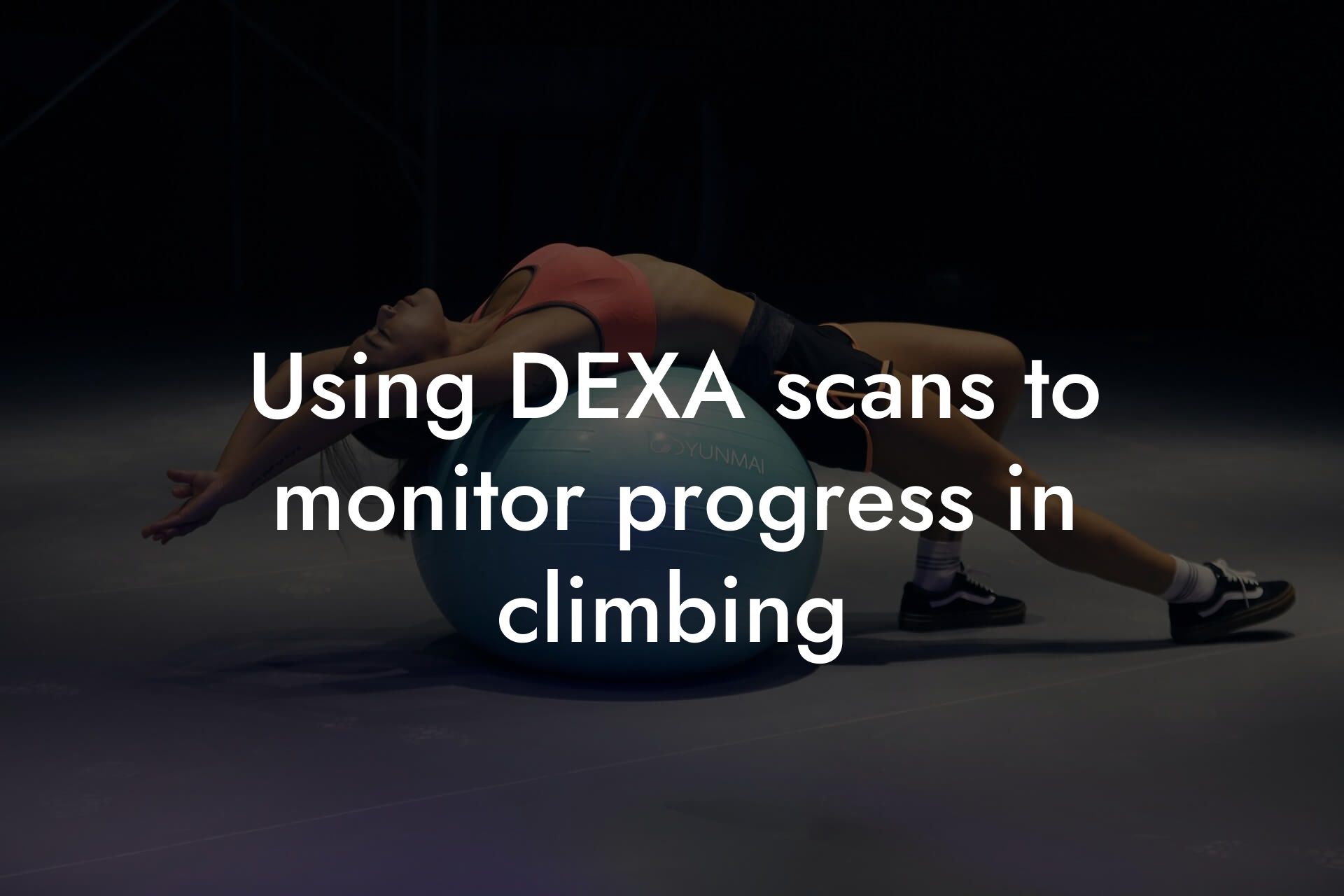As a high-earning professional, you understand the importance of maintaining peak physical performance to stay ahead in your career. Whether you're a rock climber, mountaineer, or simply enjoy hiking, having sustained energy during climbs is crucial for success and safety. At Tano Performance Group, we believe that optimal nutrition plays a vital role in achieving this goal. In this article, we'll explore the nutrition strategies you need to know to fuel your climbs and take your performance to new heights.
Table of Contents
Understanding Energy Production
Before we dive into nutrition strategies, it's essential to understand how your body produces energy. During exercise, your body relies on three energy systems: the phosphocreatine system, anaerobic glycolysis, and aerobic respiration. The phosphocreatine system provides immediate energy for short, high-intensity efforts, while anaerobic glycolysis kicks in for longer, high-intensity efforts. Aerobic respiration is the most efficient system, using oxygen to convert glucose into energy for sustained efforts.
Macronutrient Balance
A well-balanced diet that includes the right mix of macronutrients is crucial for sustained energy during climbs. Aim to consume:
- 55-65% of daily calories from complex carbohydrates (whole grains, fruits, vegetables)
- 20-25% of daily calories from lean protein sources (lean meats, fish, eggs, dairy)
- 15-20% of daily calories from healthy fats (nuts, seeds, avocados)
This balance will provide sustained energy, support muscle function, and aid in recovery.
Carbohydrate Loading
Carbohydrate loading is a strategy used to maximize glycogen stores, providing a readily available energy source for your climb. 2-3 days before your climb, increase your carbohydrate intake to 70-80% of daily calories. Focus on complex carbohydrates, such as whole grains, fruits, and vegetables, and avoid simple sugars. This will help you store glycogen in your muscles and liver, providing a rapid energy source during your climb.
Hydration and Electrolytes
Adequate hydration is critical for energy production and overall performance. Aim to drink at least 8-10 glasses of water per day, and make sure to consume electrolyte-rich foods or supplements to replenish lost salts. Electrolytes, such as sodium, potassium, and magnesium, play a crucial role in nerve function, muscle contractions, and hydration. Include electrolyte-rich foods like bananas, dates, and coconut water in your diet, and consider adding electrolyte supplements to your water or sports drinks.
Pre-Climb Meal
Your pre-climb meal should provide a balanced mix of macronutrients, be easy to digest, and provide sustained energy. Aim to eat a meal 1-3 hours before your climb that includes:
- Complex carbohydrates (whole grains, fruits, vegetables)
- Lean protein sources (lean meats, fish, eggs, dairy)
- Healthy fats (nuts, seeds, avocados)
Examples of pre-climb meals include oatmeal with fruit and nuts, whole-grain toast with avocado and eggs, or a smoothie bowl with banana, spinach, and almond milk.
In-Climb Nutrition
During your climb, it's essential to replenish energy stores and electrolytes. Aim to consume 30-60 grams of carbohydrates per hour, along with electrolyte-rich foods or supplements. Some examples of in-climb snacks include:
- Dried fruits and nuts
- Energy bars
- Jerky or dried meat
- Sports drinks or electrolyte-rich beverages
Post-Climb Recovery
After your climb, it's crucial to replenish energy stores and aid in recovery. Aim to consume a meal or snack that includes:
- Complex carbohydrates (whole grains, fruits, vegetables)
- Lean protein sources (lean meats, fish, eggs, dairy)
- Healthy fats (nuts, seeds, avocados)
This will help replenish glycogen stores, support muscle recovery, and aid in muscle repair. Examples of post-climb meals include a smoothie with banana, protein powder, and almond milk, or a meal with grilled chicken, sweet potatoes, and steamed vegetables.
Individualized Nutrition Planning
Everyone's nutritional needs are different, and what works for one person may not work for another. At Tano Performance Group, we understand the importance of individualized nutrition planning. Our DEXA machine provides a comprehensive body assessment, giving us the information we need to create a personalized nutrition plan tailored to your specific needs and goals. By working with our team, you'll receive a customized nutrition plan that will help you optimize your energy levels, improve your performance, and achieve your goals.
By incorporating these nutrition strategies into your training regimen, you'll be able to sustain energy levels during climbs, improve your performance, and take your career to new heights. Remember, optimal nutrition is just one piece of the puzzle – combine it with regular exercise, proper rest, and recovery, and you'll be unstoppable.
Frequently Asked Questions
What are the most common energy-zapping mistakes climbers make?
As climbers, we've all been there - feeling exhausted and drained during a climb, wondering what went wrong. The most common energy-zapping mistakes climbers make include inadequate hydration, poor nutrition, and insufficient rest and recovery. Additionally, failing to pace oneself, not adjusting to altitude changes, and neglecting to fuel during climbs can also lead to energy crashes.
How does nutrition impact my energy levels during climbs?
Nutrition plays a critical role in maintaining energy levels during climbs. A well-balanced diet that includes complex carbohydrates, lean proteins, and healthy fats provides the necessary fuel for your body to function optimally. Adequate nutrition also helps to prevent energy crashes, supports recovery, and enhances overall physical performance.
What are the best foods to eat before a climb?
The best foods to eat before a climb are those that are high in complex carbohydrates, moderate in protein, and low in fat and fiber. Examples include oatmeal with fruit and nuts, whole-grain toast with avocado and eggs, or Greek yogurt with berries and honey. Aim to eat a balanced meal 1-3 hours before your climb to allow for proper digestion.
How much water should I drink during a climb?
Adequate hydration is essential during climbs. Aim to drink at least 2-3 liters of water per hour, depending on the intensity and duration of your climb. You can also consume electrolyte-rich drinks or snacks to replenish lost salts and minerals.
What are electrolytes, and why are they important during climbs?
Electrolytes are essential minerals that help regulate various bodily functions, including hydration, nerve function, and muscle contractions. During climbs, electrolytes are lost through sweat, which can lead to dehydration, muscle cramps, and fatigue. Consuming electrolyte-rich foods and drinks, such as bananas, dates, or sports drinks, can help replenish lost electrolytes.
Can I eat during a climb, or should I wait until I reach the summit?
It's essential to fuel during a climb, especially during long or intense climbs. Aim to eat small, frequent meals or snacks every 30-60 minutes to maintain energy levels. Choose lightweight, high-calorie foods that are easy to digest, such as energy bars, nuts, or dried fruits.
What are the best snacks to eat during a climb?
The best snacks to eat during a climb are those that are high in calories, easy to digest, and provide a quick energy boost. Examples include energy bars, nuts, dried fruits, jerky, or trail mix. Aim to choose snacks that are low in sugar, salt, and unhealthy fats.
How can I prevent altitude sickness during climbs?
Altitude sickness, also known as acute mountain sickness (AMS), occurs when the body cannot adapt quickly enough to high altitudes. To prevent AMS, ascend gradually, stay hydrated, eat small, frequent meals, and avoid overexertion. Additionally, consider taking Diamox or other altitude sickness medications if recommended by your doctor.
What are the signs and symptoms of altitude sickness?
The signs and symptoms of altitude sickness include headaches, nausea, fatigue, dizziness, and shortness of breath. If you experience any of these symptoms, stop ascending, rest, and hydrate. If symptoms persist or worsen, descend to a lower altitude and seek medical attention.
How can I stay motivated during long climbs?
Staying motivated during long climbs can be challenging, but there are several strategies that can help. Set realistic goals, break your climb into smaller segments, and reward yourself when you reach milestones. Additionally, climb with a buddy, listen to music, or focus on your breathing to stay engaged and motivated.
What are the benefits of climbing with a buddy?
Climbing with a buddy provides several benefits, including increased motivation, improved safety, and enhanced overall experience. A buddy can provide emotional support, help with navigation, and assist in emergency situations.
How can I recover after a climb?
Proper recovery after a climb is essential to prevent injury, reduce muscle soreness, and enhance overall physical performance. Focus on stretching, foam rolling, and self-myofascial release to reduce muscle tension. Additionally, consume a balanced meal or snack with carbohydrates and protein within 30-60 minutes after your climb to aid in recovery.
What are the best post-climb meals for recovery?
The best post-climb meals for recovery are those that are high in carbohydrates and protein, moderate in fat, and low in fiber. Examples include a turkey and avocado wrap, chicken and sweet potato soup, or a smoothie bowl with banana, protein powder, and almond milk.
How can I prevent muscle cramps during climbs?
Muscle cramps during climbs can be prevented by staying hydrated, consuming electrolyte-rich foods and drinks, and maintaining a balanced diet. Additionally, stretch regularly, incorporate strength training into your workout routine, and avoid overexertion.
What are the best stretches for climbers?
The best stretches for climbers include calf raises, hamstring stretches, hip flexor stretches, and shoulder rolls. Focus on stretching your major muscle groups, including your legs, hips, back, and shoulders, to improve flexibility and reduce muscle tension.
How can I improve my overall physical performance as a climber?
Improving your overall physical performance as a climber requires a well-rounded training program that includes cardiovascular exercise, strength training, and flexibility exercises. Focus on building your endurance, increasing your strength, and improving your flexibility to enhance your overall climbing performance.
What are the benefits of strength training for climbers?
Strength training is essential for climbers, as it helps to improve overall physical performance, increase endurance, and reduce the risk of injury. Focus on building strength in your major muscle groups, including your legs, core, and upper body, to enhance your climbing performance.
How can I track my progress as a climber?
Tracking your progress as a climber can be done by setting realistic goals, monitoring your performance, and adjusting your training program accordingly. Use a training log or mobile app to track your workouts, monitor your heart rate and GPS data, and stay motivated.
What are the most common injuries climbers experience?
The most common injuries climbers experience include finger injuries, shoulder strains, knee strains, and ankle sprains. Take preventative measures, such as warming up properly, stretching regularly, and using proper climbing techniques, to reduce the risk of injury.
How can I prevent finger injuries during climbs?
Finger injuries during climbs can be prevented by warming up properly, using proper climbing techniques, and taking regular breaks to rest your hands. Additionally, focus on building finger strength and endurance through exercises such as fingerboard training and grip strengthening.
What are the best ways to stay safe during climbs?
Staying safe during climbs requires attention to detail, proper planning, and adherence to safety protocols. Always climb with a buddy, use proper climbing equipment, and stay aware of your surroundings to minimize the risk of accidents.
How can I prepare for emergency situations during climbs?
Preparing for emergency situations during climbs requires knowledge, planning, and preparation. Take a first aid course, carry a first aid kit, and stay aware of your surroundings to minimize the risk of accidents. Additionally, have a plan in place for emergency situations, such as knowing the nearest hospital or having a communication device.
Here are some related articles you might love...
- The role of lean muscle mass in climbing strength
- Using DEXA scans to monitor progress in climbing
- The impact of body composition on climbing performance
- Off-season training strategies for climbers
- Balancing strength, endurance, and flexibility in climbing
- Recovery techniques for climbers after intense sessions
- Strength training programs for amateur climbers
- Reducing body fat for better climbing efficiency
- Bone density and injury prevention in climbing
Zak Faulkner
Zak Faulkner is a leading authority in the realm of physical health and body composition analysis, with over 15 years of experience helping professionals optimise their fitness and well-being. As one the experts behind Tano Performance Group, Zak has dedicated his career to providing in-depth, science-backed insights that empower clients to elevate their physical performance and overall health.
With extensive knowledge of DEXA technology, Zak specializes in delivering comprehensive body assessments that offer precise data on body fat, muscle mass, bone density, and overall physique. His expertise enables individuals to make informed decisions and achieve their fitness goals with accuracy and confidence. Zak’s approach is rooted in a deep understanding of human physiology, combined with a passion for helping clients unlock their full potential through personalised strategies.
Over the years, Zak has earned a reputation for his commitment to excellence, precision, and client-focused service. His guidance is trusted by top professionals who demand the best when it comes to their health. Whether advising on fitness programs, nutritional strategies, or long-term wellness plans, Zak Faulkner’s insights are a valuable resource for anyone serious about taking their health and fitness to the next level.
At Tano Performance Group, Zak continues to lead our Content Team revolutionising how professionals approach their physical health, offering unparalleled expertise that drives real results.




